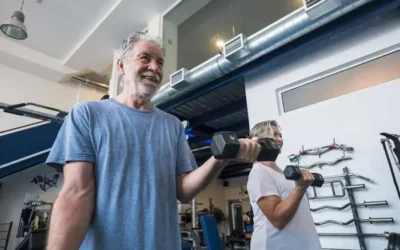Nutrition for Injury?
Nutrition is only for weight loss and professional athletes, right? Wrong. Nutrition is important for regular exercisers too, and is a key ingredient in the recipe for recovery and health.
When we exercise, we place good stress upon the body to create changes in order to improve our muscles, heart and mind. This application of stress, or load, is what creates training adaptations. In order to maximise these adaptations, adequate nutritional intake is required.
This is exactly the same when the body is recovering from an injury.
Good nutrition is just as important in recovery as it is in exercise. It’s not the time to feel sorry for yourself and try and mask the pain with chocolate and alcohol, tempting as that may be! It’s time to be proactive, make a plan and speed up your recovery.
I have a muscle tear. Now what?
If you tear a muscle and are a regular exerciser, your first port of call is a rehab plan tailored to you by your Physio.
You will possibly have to curtail your exercise and reduce calories slightly but you will need to up your protein intake and amino acids, which are key building blocks for tissue reformation and building new muscle.
First of all you will suffer a small bleeding phase in the tissue. This is why we stop the activity and ice the area initially to minimise the bleed. This usually lasts for approximately 8 hours.
Stage 1 Nutritional Recovery and Inflammation.
Important announcement: ‘Inflammation is good’. Often when we suffer an injury, the first thing we reach for is Ibuprofen, to ‘limit the inflammation’. Stop this practice please!
(Download our ‘5 biggest mistakes’ guide on our webpage for more information on this.)
Inflammation is an important stage of the healing process. We want to make this process efficient rather than suppress it. Taking anti-inflammatories in the first 72 hours will slow, or stop the next phase of the healing process.
What should I take to help the inflammatory phase be more efficient?
Branch Chain Amino Acids will help muscle recovery. These are the building blocks for new tissue. Your body does not produce these naturally so they need to be consumed in your diet. Good sources of BCAA are protein, beef, tuna, salmon, peanuts, eggs and lentils.
Omega 3 and Omega 6 fatty acids help regulate inflammation and can be found in flaxseed oil, fish oil, walnuts and chia seeds.
Pre and probiotic yoghurt drinks (are ideal additions to) help keep the gut healthy
Echinacea supplementation has also shown positive wound and immunity modulating effects.
Stage 2 Nutritional Recovery – Repair and Remodelling
After inflammation, the next stage of recovery is creating new tissue to repair and remodel the injury site. Protein is key in this stage to this remodelling.
High quality Protein combined with Branch Chain Amino Acids will play an important role in any training, rehabilitation or recovery strategy. Typically the body requires 2.2g of protein for every kilo of body weight.
I have a Tendon Injury, now what?
Apply the same principles as a muscle injury, as tendon is also made of proteins. Glycine is an important component of collagen which muscle and tendons are built from. Green Tea is a great source of Glycine and boosts your antioxidants at the same time. Around 5 cups per day are necessary to really aid recovery.
I have a Bone Injury, now what?
There is more you can do to accelerate your bone injury recovery than just rest: eat more, take protein supplements and stop smoking!
Bone healing increases your body’s energy requirements, so despite the reduction in activity often this can mean increasing your energy intake to promote healing. In traumatic fractures of the long bones there is an immediate increase in metabolic demands that can translate into a caloric demand three times that of normal.
Studies have shown that smoking can inhibit bone recovery, so lay off the cigarettes and make sure you are looking out for the following things in your diet:
– Protein: Numerous studies document the acceleration of fracture healing with even a modest 10 to 20 gram increase in protein intake.
– Amino Acids: these include lysine, arginine, proline, glycine, cystine, and glutamine. Lysine, for example, is known to enhance calcium absorption and can increase the amount of calcium absorbed into the bone matrix, and aid in the regeneration of bone tissue.
– Antioxidants: (to repair oxidative damage). When a bone fracture occurs, a remarkable yield of free radicals is generated by the damaged tissues. This can overwhelm the natural anti-oxidant defence mechanisms, (so supplementation of anti-oxidants is beneficial in such situations)
– Vitamins and Minerals: By weight, bone is roughly 70% minerals (calcium, phosphorus, magnesium, silicon, zinc, etc.) and fracture healing requires available minerals. Most of us under-consume minerals on an everyday basis, so we may need to search for a supplement that will help, Look out for a supplement offering the following: Zinc, Copper, Calcium & Phosphorous, Vitamin C, Vitamin D, Vitamin K, Vitamin B6
Bone is a complex tissue that requires many nutrients but it is also a tissue which heals well, and this is due to bone having a good blood supply to deliver the nutrients required for healing. Given this fact, supplementation with a wide range of key bone nutrients is likely to provide more effective fracture healing than individual nutrient supplementation.
4 Things to Look Out For In Supplements
Absorption is key. Some people are lactose intolerant, therefore supplementing with whey protein (a by-product of cheese production) may not be suitable. This may lead to digestion problems such as wind, gastro problems or your body may simply not be able to absorb and use what you ingest. In such cases, a pea or plant based protein supplement may be more appropriate.
8-10g per hour of protein is what your body can absorb. A protein drink usually takes 1.5-2 hours to pass through your system so anything more than 20g of protein is unlikely to be absorbed.
Look for Protein that is low in sugar.
The World Health Organisation created a percentage score for amino acid absorption to give a fair comparison. A score of 100 is desirable for absorption as we then know it will be absorbed by the body.
Conclusion
Injuries are part and parcel of life and although frustrating and painful, they do get better. Nutrition can appear complicated but applying simple nutritional tactics can help your body recover quickly. At Optimal Physio we would advise our clients to consider the nature of their injury and ensure that an appropriate nutritional strategy is considered to assist your recovery.
-
These are our take home tips:
Inflammatory Phase (2-4 days for soft tissue, 2-3 weeks for bone) – Focus on immune system support, adjust calorie intake and start supplementing with EAA/ BCAA. An example would be Arbonne Phytosport After workout range which is packed full of BCAA, magnesium and Vit B12.
Repair Phase – Increase protein intake, good gut health, injury specific supplementation such as Arbonne protein which provides 20 grams of vegan protein, plus more than 20 essential vitamins and minerals per serving, delivering a 100% amino acid score. Clinically tested and certified to have a low glycaemic index, which has little effect on blood sugar levels and does not cause a spike in blood sugar.
Plan your recovery. Own your injury and take responsibility for recovery rather than comfort eating while activity is restricted. There is always some activity that can be done, just ask one of your Optimal Physio’s!
Our recommended products can be purchased at optimalphysio.co.uk/shop/
For expert nutrition advice, book a consultation at our Largs or Clarkston physiotherapy clinics.




0 Comments